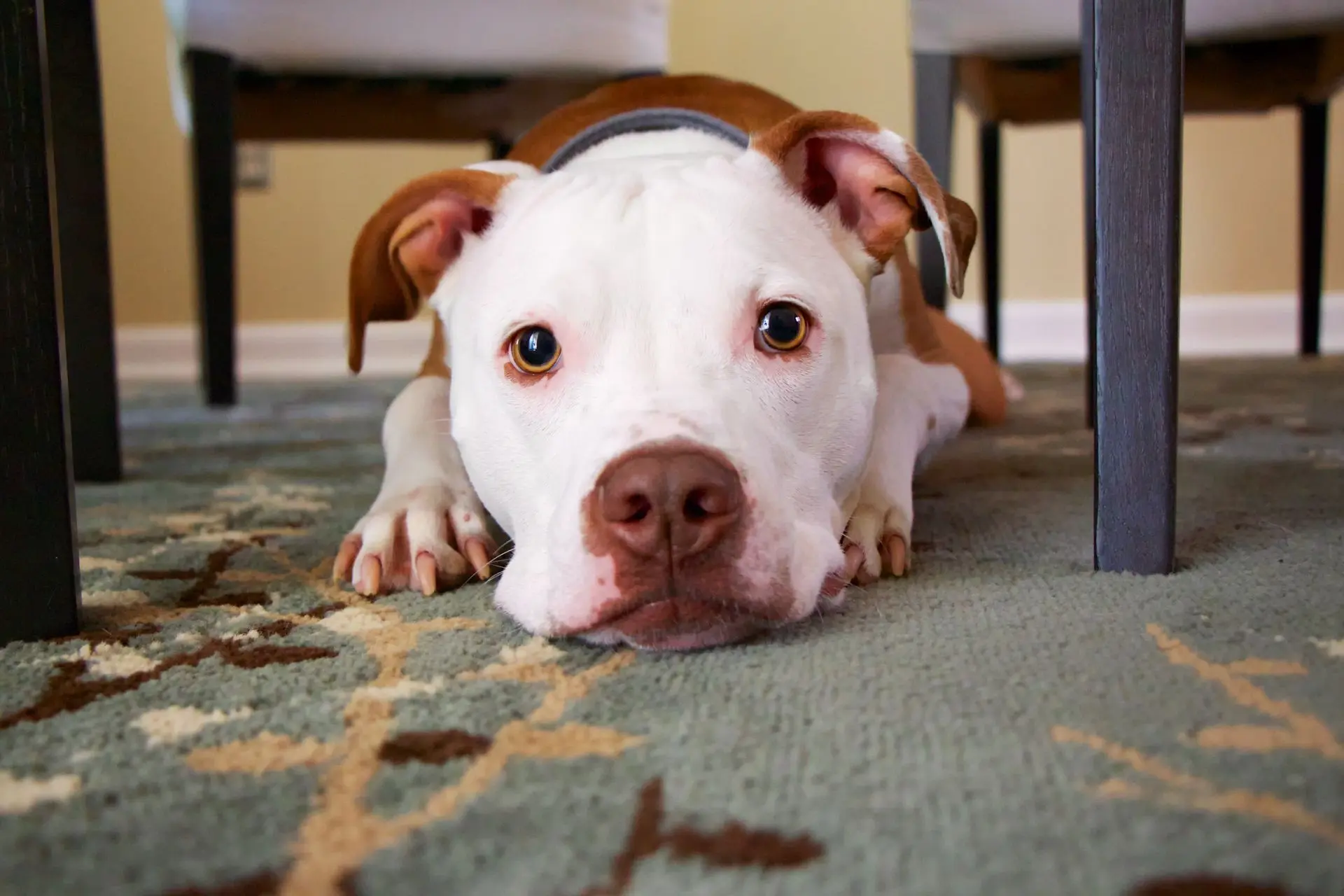In the Netherlands, office dogs have been gaining popularity for some time now. Having a dog in the office is said to improve the working atmosphere, increase solidarity, and, above all, reduce stress. In addition, petting and cuddling an office dog helps people relax, and the dog is there for you when you are angry, sad, or disappointed.
But what is it actually like for the dog? Does a dog enjoy performing this ‘function’ in an office?
In our daily work, we see that dogs that exhibit a lot of problem behavior often live with people who do not work or work part-time. Dogs that live with people who work full-time often have far fewer behavioral problems. This is simply because dogs in the latter case find it much easier to get the sleep they need. They spend a lot of time alone at home in their quiet and familiar environment, where they can sleep undisturbed for long periods and process everything they have experienced. This is different for a dog that always has people in the house; the environment is much more restless for the dog because there is constantly someone walking around, talking to him, or touching him. This makes it more difficult for a dog to fall into a deep sleep and rest properly. What many people forget is that a dog needs much more sleep than a human. An adult dog needs at least 15-16 hours of sleep per day to be able to process its stimuli.

When a dog is taken to the office, getting some sleep naturally becomes a bit more difficult. An office is not only a less familiar environment for a dog, but there are also many more different (and unfamiliar) people bustling about. On top of that, the atmosphere at the office is different from at home. From people’s perspective, a dog is at the office just to please them. So they will regularly walk by, talk to the dog, and pet or cuddle him. Because people are active and busy with their work, there’s more adrenaline in the air, which creates a more restless atmosphere. Taken together, all this makes it very hard for a dog to get the rest he needs.
People become calm and happy from seeing and touching a dog, but for the office dog all that attention makes it difficult to get enough sleep, which over time increases the risk of an incident. When a dog doesn’t get enough sleep, he can’t process stimuli, becomes increasingly stressed, and may turn hyperactive. In everyday language, hyperactivity in dogs is often mistaken for enthusiasm, but it’s not quite the same. When a dog becomes hyperactive, it means he is overstimulated. Compare it to a two-year-old who is well past bedtime: at a certain point the child becomes hyperactive from fatigue and starts running around, throwing things, acting out, and often ends up crying. The same thing happens with dogs. When they get too little rest, they have an excess of adrenaline in their blood, which makes them hyperactive and stressed. This makes a dog irritable (just like that two-year-old who should have been in bed long ago).

Because of frustration, irritation, and lack of sleep, a dog will increasingly start to show problem behavior. Examples include pacing, excessive barking, marking, constantly demanding attention by putting a paw on you or laying his head in your lap, jumping up, destroying things, whining or whimpering, snatching food, begging, and so on. In the end it can all become too much for a dog, and he may snap at some point to express his displeasure.
Apart from the negative consequences for the office dog, it’s also worth asking whether this four-legged friend is such a big added value for people. Especially in the beginning, an office dog can distract many people, which doesn’t help productivity. The more attention the dog gets from everyone who stops by, the more he will start to demand it over time. He may begin to misbehave so that he stands out. He can escalate his behavior more and more to remain the center of attention. At that point, an office dog will be more of a distraction than a pleasant addition to the work atmosphere.
Of course, the problems just described don’t always have to occur, but in practice an office environment often turns out to be a place where dogs aren’t very happy. From a dog-welfare perspective, we therefore advise against taking a dog to the office.
Still really want to bring your dog to work? Then we recommend doing so no more than once every 14 days. We’re happy to help you set this up properly so that both your colleagues and your dog have a positive experience. It’s important that the dog has his own spot where he feels safe, can sleep comfortably, and is left alone. You might naturally wonder whether it even makes sense to bring your dog to work if he’s only allowed to lie in a bed the whole time.
Want to know more about this topic or need further explanation? Feel free to contact us!